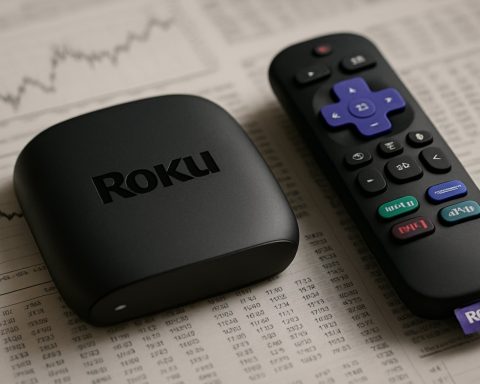- UniFirst Corporation’s fiscal second quarter of 2025 saw a 1.9% revenue growth, reaching $602.22 million, slightly below analyst expectations.
- The Core Laundry Operations segment increased revenues by 1.5% to $530.4 million, while the Specialty Garments segment rose 2.2% to $44.4 million.
- Operating income increased by 11.7% to $31.2 million, highlighting effective financial management.
- Strategic investments in customer relationship management and enterprise resource planning cost $1.9 million but aim to enhance profitability.
- UniFirst rejected a $275 per share acquisition proposal from Cintas Corporation, maintaining its independence.
- Full-year revenue projections range from $2.422 billion to $2.432 billion, with adjusted EPS expected between $7.30 and $7.70.
- Resilience and strategic initiatives remain central to UniFirst’s path toward strengthening market position and profitability.
A gust of resilience breezed through UniFirst Corporation’s latest financials, hinting at a strategic dance between incremental growth and formidable market challenges. For the fiscal second quarter of 2025, UniFirst recorded a revenue growth of 1.9%, reaching the tidy sum of $602.22 million—a whisper shy of analysts’ estimates.
Behind this modest ascent lies a tale of steady persistence. UniFirst’s flagship segment, Core Laundry Operations, wove a tapestry of progress with revenues climbing by 1.5% to stand at $530.4 million. Not to be outdone, their Specialty Garments segment exhibited a modest flair with a 2.2% uptick, closing in at $44.4 million. Amidst these numbers, a story of competitive excellence unfolds; operating income soared by 11.7%, culminating in $31.2 million, underscoring the company’s adept financial navigation.
Beneath the surface, UniFirst’s visionary investments are already spinning threads of future returns. Strategic initiatives, such as enhancing customer relationship management and refining enterprise resource planning, have demanded substantial resources. These efforts cost $1.9 million this quarter but promise improved profitability and operational finesse, allowing UniFirst to weave a stronger business fabric.
While the financial skyline shimmered with some positive signs, a darker cloud loomed briefly. Competitor Cintas Corporation’s acquisition proposal dangled like a tempting offer, valuing UniFirst at $275 per share. UniFirst, however, turned away from this substantial bid, guarding its autonomy and the interests of its shareholders, a decision cementing its independent path.
Interesting winds of change are forecasted. UniFirst anticipates full-year revenues to graze between $2.422 billion and $2.432 billion, amid an adjusted earning per share (EPS) outlook lofted skywards to $7.30 – $7.70. This optimistic forecast echoes UniFirst’s unwavering goal: to fortify its standing against semblances of stagnation.
Amidst this financial tapestry, the clear thread uniting all elements is resilience—a steadfast resolve to leverage strategic advancements into profitability while bolstering their operational fabric. UniFirst navigates the market’s looms with a deft hand, poised to weave its future success with precision and agility.
Why UniFirst’s Resilience Strategy Is the Key to Its Future Success
UniFirst Corporation’s recent financial performance paints a picture of resilience and strategic foresight. While facing market challenges, the company has managed steady growth and operational gains. Let’s dive deeper into some aspects that were not fully explored in the initial report, providing a comprehensive understanding of where UniFirst stands and where it might be headed.
How UniFirst Is Strategic About Its Growth
UniFirst’s growth, although modest, is a result of carefully planned strategies. Here are key insights and real-world applications relevant to UniFirst’s business model:
– Core Laundry Operations: As the main revenue driver, this segment saw a 1.5% increase, revealing a high demand for clean, reliable, and high-quality uniform services, essential for businesses aiming to maintain hygiene standards especially in sectors like hospitality and healthcare.
– Specialty Garments: This segment’s 2.2% growth highlights its potential in serving niche markets that require specialized clothing, like flame-resistant and high-visibility outfits for industries such as energy and construction.
Key Questions on the Minds of Stakeholders
Why Did UniFirst Reject Cintas Corporation’s Acquisition Proposal?
Maintaining autonomy was likely seen as crucial for UniFirst to pursue its long-term strategies and protect shareholder interests. Independence provides flexibility to navigate market conditions without the constraints of another company’s priorities, ensuring UniFirst can make decisions that best align with its vision and operational goals.
How Are UniFirst’s Strategic Initiatives Transformational?
UniFirst is investing $1.9 million into enhancing its customer relationship management (CRM) and enterprise resource planning (ERP) systems. This investment aims to improve efficiency and customer interaction, potentially driving future profitability by streamlining operations and increasing customer loyalty—a competitive edge in an industry where client retention is key.
Market Trends and Industry Forecast
– Uniform Rental Market Growth: The uniform rental market is expected to grow due to increasing demand for cleanliness and safety protocols in industries. According to a report by Market Research Future, the global workwear and uniform market is projected to expand at a CAGR of about 5% from 2020 to 2027.
– Technology in Textile: Innovations in fabric technology, such as antimicrobial and moisture-wicking materials, are setting new standards in uniform functionality, potentially enhancing UniFirst’s product offerings and attractiveness to clients.
Pros and Cons Overview
Pros:
– Steady revenue growth despite market challenges.
– Strategic investments in technology and operations.
– Independent path allows flexibility in strategic directions.
Cons:
– Modest growth may not satisfy all investors looking for rapid returns.
– Continued pressure from competitors in a saturated market.
Actionable Recommendations
– For Businesses Considering UniFirst: Evaluate their product lines for specific industry needs, such as flame-resistant uniforms for hazardous environments, to maximize value and safety for employees.
– For Investors: Monitor UniFirst’s technological enhancements in CRM and ERP, as these are crucial for their long-term competitive positioning and profitability.
– For Competitors: Reinforce partnerships and technology investments to match UniFirst’s operational improvements, offering tailored solutions to capture new market opportunities.
For more information on UniFirst and its offerings, visit Unifirst.
UniFirst’s story is one of resilience and strategic foresight, demonstrating a firm commitment to carving its path in the industry, holding its ground amid tempting offers, and refining its operational fabric to boost future success.










